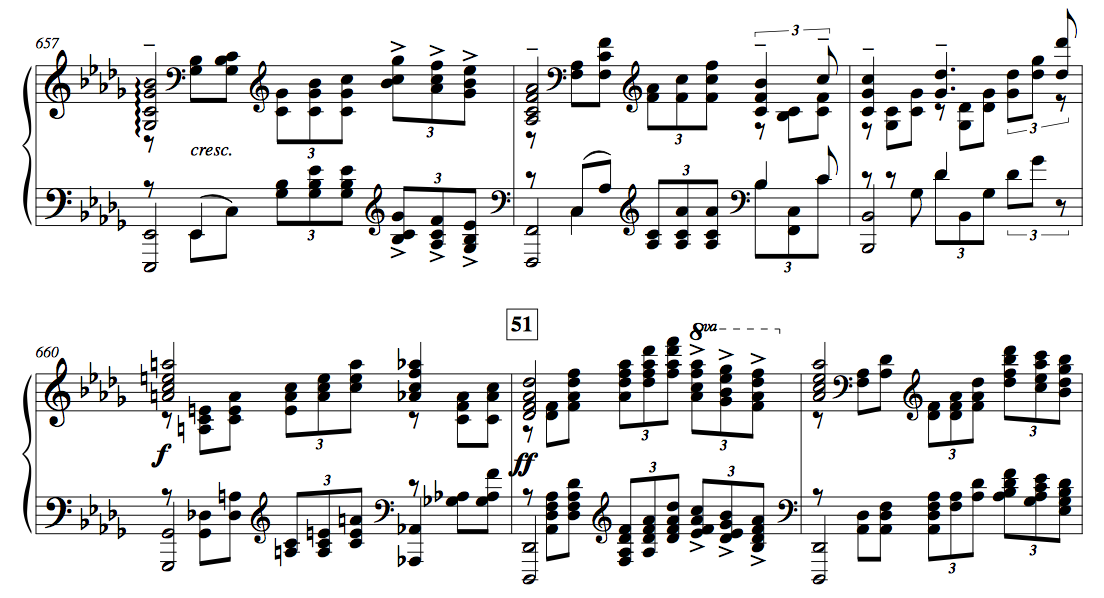I'm working on an analysis of Variation XVIII of Rachmaninoff's Rhapsody on a Theme of Paganini.
This famous variation is in D♭-major. I'm trying to analyze that first chord in measure 660. This chord (enharmonic to F♯ø7) is followed by an A♭7(sub6) chord (V7sub6) which leads to the tonic D♭-major chord at rehearsal number 51.
How would that first chord in measure 660 be analyzed?
Would it be considered a substitute for a iv7 chord (borrowed from the parallel minor, D♭/C♯ minor), but with a lowered fifth? (G♭m7b5)
Please let me know if you have any ideas on how to best approach analyzing this chord. Thanks in advance - much appreciated!

